--- SAMPLE ---
I have a data set (sample) that contains 1 000 damage values (the values are very small <1e-6) in a 1-dimension array (see the attached .json file). The sample is seemed to follow Lognormal distribution:

--- PROBLEM & WHAT I ALREADY TRIED ---
I tried the suggestions in this post Fitting empirical distribution to theoretical ones with Scipy (Python)? and this post Scipy: lognormal fitting to fit my data by lognormal distribution. None of these works. :(
I always get something very large in Y-axis as the following:
Here is the code that I used in Python (and the data.json file can be downloaded from here):
from matplotlib import pyplot as plt
from scipy import stats as scistats
import json
with open("data.json", "r") as f:
sample = json.load(f) # load data: a 1000 * 1 array with many small values( < 1e-6)
fig, axis = plt.subplots() # initiate a figure
N, nbins, patches = axis.hist(sample, bins = 40) # plot sample by histogram
axis.ticklabel_format(style = 'sci', scilimits = (-3, 4), axis = 'x') # make X-axis to use scitific numbers
axis.set_xlabel("Value")
axis.set_ylabel("Count")
plt.show()
fig, axis = plt.subplots()
param = scistats.lognorm.fit(sample) # fit data by Lognormal distribution
pdf_fitted = scistats.lognorm.pdf(nbins, * param[: -2], loc = param[-2], scale = param[-1]) # prepare data for ploting fitted distribution
axis.plot(nbins, pdf_fitted) # draw fitted distribution on the same figure
plt.show()
I tried the other kind of distribution, but when I try to plot the result, the Y-axis is always too large and I can't plot with my histogram. Where did I fail ???
I'have also tried out the suggestion in my another question: Use scipy lognormal distribution to fit data with small values, then show in matplotlib. But the value of variable pdf_fitted is always too big.
--- EXPECTING RESULT ---
Basically, what I want is like this:
And here is the Matlab code that I used in the above screenshot:
fname = 'data.json';
sample = jsondecode(fileread(fname));
% fitting distribution
pd = fitdist(sample, 'lognormal')
% A combined command for plotting histogram and distribution
figure();
histfit(sample,40,"lognormal")
So if you have any idea of the equivalent command of fitdist and histfit in Python/Scipy/Numpy/Matplotlib, please post it !
Thanks a lot !




